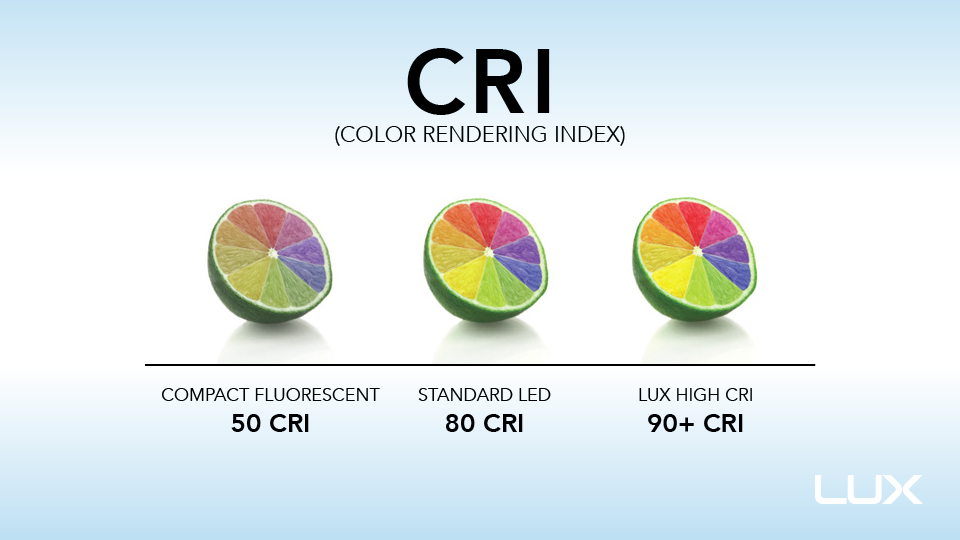21 Sep 5 Myths About LED Lighting
With anything new and noteworthy, misconceptions circulate. Sometimes there’s truth to the negatives, but often times those negatives are simply misunderstood. Or maybe the technology progresses and fixes said negatives, but people still hang on to outdated facts. How many of us have bought those LED Christmas lights thinking we were doing something good for our environment and energy bill only to discover that they burned a cold, blueish hue after spending hours stringing them up? (Unless you were going for that frosty look, then, perfect!) But if not, every time you drove up to your house at night you might have thought, “Huh. Not quite what I was expecting.” So yeah, we get it and we’ve been there. But we don’t have to stay there. With huge technological advancements in LED lighting in recent years, we’re here to help dispel some of the myths and shed a little light on the truth.
Myth #5. LEDs are blue and not warm-colored like incandescents.
Speaking of the bluish Christmas light hue…not all LEDs burn a blue color. LEDs are available in the entire Kelvin scale ranging from an amber glow to bright blue sky color. Looking for a “warm” or “soft white” color to replace your incandescents? No problem - just look for lights that have a Kelvin temperature of 3000K and lower. The lower the Kelvin, the warmer the light. For example, LUX has vintage amber-coated LED filaments as low as 1900K (see our vintage amber-coated Edison style ST19). Looking for a more refreshing and crisp glow? The “bright white” or “daylight” description is what you should look for and will be more in the 4000K and higher range. See our image scale for reference.
Myth #4. LEDs are too expensive.
Yes, there was a time not long ago when if you wanted the benefits of LEDs it was going to cost you. Of course, the amount of money you would save on your energy bill would justify the cost and pay for itself in as little as two years, but it was an upfront investment. Not so anymore. LEDs are now affordable making them an option for almost every household. The cost of some LEDs are now the same price as other options on the shelves. And with huge savings on your energy bill and long lifespan, why wouldn’t you go with the LEDs?
Myth #3. LEDs are not dimmable.
Most LEDs have the capability to be dimmed. However, not all dimmable LEDs will dim correctly or low enough if it doesn’t use a compatible dimmer system. This is because LEDs consume such a low wattage, that the dimmer does not function the same when using high-wattage incandescents. So while this myth is false, make sure you take a look at the “dimmer compatibility” sheet or be prepared to upgrade your dimmers. However, when lights are dimmed they use even less energy which can also make a huge difference in your energy savings and longevity of your lights.
Myth #2. LEDs last forever.
Well, this one IS a myth. However, it’s not too far off considering many LEDs will last over 30 years. With up to 90% energy savings for many household appliances, and up t0 70% in commercial and outdoor use, the savings and longevity are truly unmatched. Plus, add in the correct dimmers like on the above point, and they will last even longer with even more energy savings than they already offer. It’s important to note that LEDs don’t burn out. Ever. That’s because they have no filament or oxidation process that wears down the electronics or metal. LEDs will simply get dimmer at the end of their expected lifespan.
Myth #1. LEDs have sub-par color rendering index properties.
Incandescents have a perfect color rendering index (CRI) of 100, so when alternative energy-saving lighting solutions like fluorescents came to the market, people were disappointed in the quality of the light. And rightly so. Many compact fluorescents have a low CRI of 50. Most LEDs have a solid CRI of 80, with High CRI options available when color rendering is very important (like in restaurants, retail stores, galleries, etc). Our LED MR16, for example, has an incredible High CRI option of 95, so colors appear as vibrant to the eye as under broad daylight.
In Conclusion
LED technology has come a long way in not only becoming affordable for the average household, but in surpassing previous technological limitations. Here at LUX, we are committed to staying at the forefront of LED technology and constantly improving our products and keeping them affordable. And while some of these myths were circulated for a reason, sometimes it’s just a matter of knowing what to look for like lumens (not Watts) for brightness, correlated color temperature for either a warm or cool glow (the lower the Kelvin temp, the warmer the light), and CRI (higher the CRI, the better the light quality). Just remember to keep these things in mind when making your LED purchase. Have a question? Don’t hesitate to contact us! We’d be happy to help.

